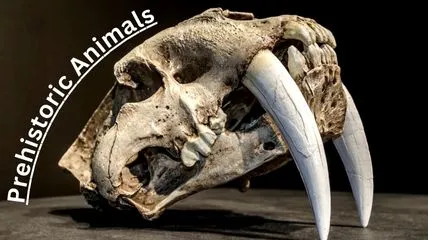Thousands or even millions of years ago some very terrible and dangerous animals lived on the earth now known as prehistoric animals.
Here we’re going to find out who was probably the strongest.
Let’s know something new about the history of the planet earth.
Also Read: Most Unique Places In The World
Strongest Prehistoric Animals In The World
Dinosaurs and primitive animals are not included in this list.
So, here you are going to know about some of the strongest prehistoric animals that have ever existed.
let’s go!!!
1. Argentavis Magnificens

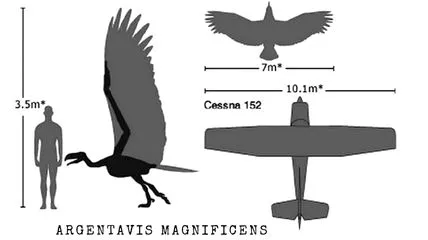
The Argentavis was the largest bird capable of flying that ever lived.
With a wingspan of 6 meters and a weight of 70 kilograms, it was an absolute monster.
If you look at what eagles which are really small compared to an Argentavis can do to animals such as ibex.
It becomes clear that you should never underestimate the birds.
However, the Argentavis was primarily a carry-on eater and not a bird of prey.
That means that’s probably why it wasn’t so strong in battle.
2. Cervalces Scotti


This moose is the extinct ancestor of the great moose that still lives in North America today.
It has a height of over 2.5 m and a weight of over 700 kg.
Cervalces was slightly larger than its current relatives.
It could defend enemies with its huge horns, or of course simply by kicking.
3. Dromornis Stirtoni
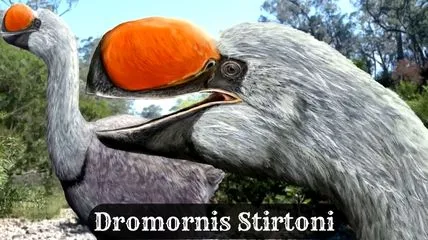
The Thunderbird was one of the largest flightless birds of all time.
Its height is about 3 meters and its weight is up to 650 kg.
In fact, it was not an easy opponent.
His legs were strong but probably still too slow
Its beak was large and strong, so some researchers believe that Dromornis was a carnivore.
What is more likely, however, is that the bird uses its beak to crush tough components of plants.
In any case, you definitely don’t want to be attacked by it.
4. Diprotodon

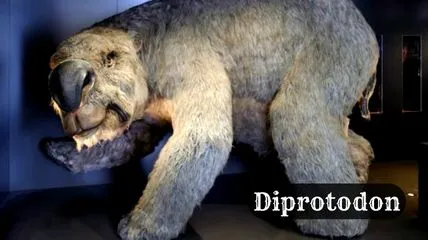
Here we have the largest marsupial ever.
However, it is on the list of the strongest animals due to its size of more than 2 meters and weight of about 3 tons.
It fed on branches and roots and was actually quite harmless. Nevertheless, it was huge, and for this reason alone it should not be underestimated.
5. Glyptodon



These animals died out only 12,000 years ago, which is not much longer than the other animals on this list of prehistoric animals.
However, Glyptodon is on this list due to its mass with a size of 3 meters and a weight of 1400 kg.
It is slightly smaller than Protodon but has a heavy armor over it.
Yet his head was unprotected so that it would be easier for stronger animals to fight him, even if they were very small.
6. Amphicyon Giganteus

The Amphicyon Giganteus is a creature that has the combined characteristics of a bear, dog and cat.
It has broad claws and claws that cannot be retracted like a bear, but also a long flexible spine like a cat and a long skull like a dog.
Males of this species were much larger-than today’s lions, with up to 300 kg.
They could break open-large bones like a hyena and kill their prey with bites in the neck and chest area.
7. Smilodon Populator


Smilodon populator was the largest genus of saber-toothed cats.
The animals reached a shoulder height of 1.2 m and a weight of up to 360 kg.
Their most striking feature is the 28 cm long fangs protruding from the upper jaw.
Because of these teeth it is believed that Smilodon feeds on juvenile mammoths and giant ground sloths.
To kill them, Smilodon climbed onto his back and then poked his long saber teeth into his body.
Although, Smilodon was too slow and cumbersome for fast animals.
8. Panthera Atrox
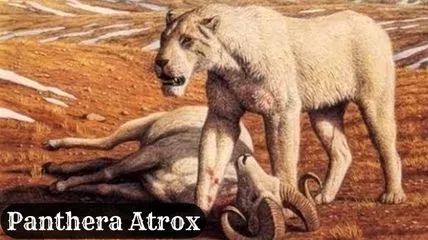
The Panthera Atrox is the American lion and it is the biggest feline predator of all time.
With a length of 2.8 m and a weight of up to 500 kg, the American lion was much larger than the African lion and the Smilodon.
The Panthera Atrox mainly hunted large herbivores such as buffalo deer camels, and horses.
Yes, camels were living in America but of course, they are long extinct now.
Due to the American lion being taller, it was probably a bit stronger than the Smilodon and the Emphasion.
9. Gigantopithecus

The Gigantopithecus ranks one place above the largest lion and is the largest primate ever known.
Gigantopithecus was probably about three meters tall, surpassing even the tallest man ever known, Robert Waldo.
It is in this list of prehistoric animals because this giant ape weighed around 600 kg which makes it almost four times heavier than the modern gorilla.
Modern gorillas are one of the strongest animals today.
With a heavy blow, the giant primate should have been able to defeat even the strongest feline predators.
In particular, because it has a great range and also an advantage due to its weight.
10. Megistotherium


These predators lived in Africa 23 million years ago.
They looked like hyenas, and could run fast, and had a very sharp bite.
The animals had massive skulls and impressive teeth with a length of 66 cm.
A Megistotherium was over 3 meters long by 1.5 meters and weighed between 500 and 800 kilograms.
Such an adversary must be very dangerous, even for giant apes.
Follow us on Instagram, Gab, Parler, Minds, VK, Twitter and MeWe.
Conclusion
So, These are some of the some of the strongest prehistoric animals.
Which one is your favorite? tell us in the comment section.
We are going to add more prehistoric animals to this list soon.
Thank You.
